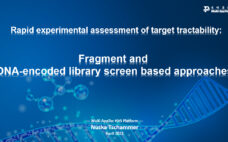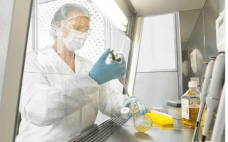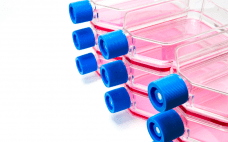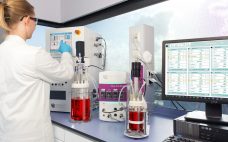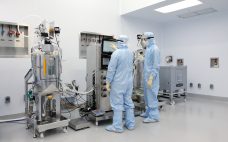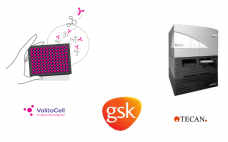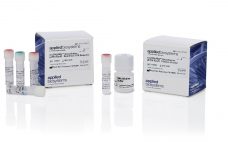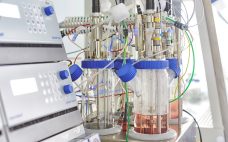This webcast features: Nuska Tschammer, Head of DEL Lab Operations, WuXi AppTec. In recent years, increasing use of genetic, transcriptional and knock-out technologies led to numerous biologically validated targets, many of them in the category “first-in-class”. The core purpose of experimentally based tractability assessments is to evaluate if the target of interest can be modulated by a chemical entity. In the past, extensive HTS screening efforts were initiated to find starting points for the small molecule drug discovery. Today, direct…
Upstream
Improve Your Cell Line Development Workflows with Analytical Tools
This webcast features: Dirk MĂĽller, PhD, Manager of Media & Process Development, Sartorius, Lukas Klein, Scientist, Sartorius. Cell line development involves screening thousands of clones to find those that are stable, produce high yields of the bioproduct, and exhibit desired critical quality attributes (CQAs). While there are multiple CQAs that need to be monitored early in the development process, product yield, cell count and viability assessment remain the main attributes by which process conditions are optimized. Incorporating analytical techniques into…
Optimized Expression Systems for Increased Productivity in CHO DG44 Based Cell Line Development
This webcast features: Dr. Rathangadhara Nammalwar, Team Lead, Cell Line Development for Protein-Based Therapeutics, Sartorius The Global Cell Line Development (CLD) services market is growing at an unprecedented pace. In 2020, the global revenues were about $700 million and are estimated to reach nearly $1.7 billion by 2028. Chinese hamster ovary (CHO) cells have been the most preferred host cell line for those CLD services, and they alone generated more than 50% of the global revenue in 2020. Key success…
Cell Media Analysis: A Critical Piece of the Bioprocessing Puzzle
This webcast features: Graziella Piras, Bioprocess Segment Director, 908 Devices Cell culture medium remains a key component of traditional monoclonal antibody (mAb)-based biologics as well as newer modalities such as gene and cell therapies manufacturing. As such, cell culture media development and optimization continue to be an important focus for the biopharmaceutical industry. Increased analytical capabilities have provided new insights into the relationship between cell culture media, the cells they support, and ultimately the outcome of the final product. That greater insight offers more…
Scaling and Stirring: Success Factors in Scale Up with Single-Use Benchtop Bioreactors
This webcast features: Cristina Bernal Martinez, Applications & Support Engineer, and Ann D’Ambruoso, Manager, Product Applications and Marketing, Getinge Single-use systems allow for a faster and easier workflow while simultaneously reducing the risk of errors and contamination in the development process. Nonetheless, fundamental bioreactor principles must be understood to correctly scale up in single-use bioreactors. Learn about the design factors in Applikon’s single-use bioreactors and review common scale-up strategies based on tip speed, power input, and kLa. Furthermore, shear stress…
TESSA Technology: A Plasmid-Free, Scalable System to Transform AAV Manufacture
This webcast features: Dr. Weiheng Su, Principal Scientist, OXGENE Adenoassociated virus (AAV) is a popular choice of viral vector for new gene therapies, but manufacturing systems have not kept pace with biological advances, leaving these therapies costly, difficult to produce at scale, and subject to inherent batch-to-batch variability. In this webinar, Dr. Weiheng Su describes how rethinking AAV manufacture “from the ground up” allowed OXGENE to manipulate AAV’s natural relationship with adenovirus to address these challenges with their novel tetracycline-enabled…
Commercial Scale Insect Cell Culture: Opportunity and Challenges in a CHO Centric World
This webcast features: Sharyn Farnsworth, Principal Scientist and Upstream Process Development-Cell Culture Group Leader, FUJIFILM Diosynth Biotechnologies A strategy for scale up and manufacture of a recombinant protein from Insect Cell Culture (ICC) using a Baculovirus Expression Vector System (BEVS) should be mapped out during the earliest stages of process development. The challenges of recombinant protein expression using ICC/BEVS production systems are different from more commonly used expression systems such as Chinese hamster ovary (CHO) and few vendors have the…
High-Throughput IgG Titer Analysis
This webcast features: Zoe Hughes-Thomas, Head Medicine Design Automation Team, and Celal Dari, Laboratory Science Apprentice, GSK Antibodies. A key cornerstone of pharmaceuticals, from oncology to immunology. But how do we quantify them? Existing methods have proven the process needs to be improved, from long assay turnaround times to discordant results. A key method of innovating the process includes embracing new technology including automation and new assays. The presentation will introduce aspects of current methods of automation that aim to…
Simplify Analytical Development for Measuring Residual Plasmid DNA in mRNA, Gene Therapy, and Other Biologics Manufacturing
This webcast features: Tania Chakrabarty, PhD, Senior Manager, Innovation Leader, Research and Development, Pharma Analytics, Thermo Fisher Scientific Plasmids are common raw materials in the manufacturing of various biotherapeutics, from use as template for mRNA vaccines to gene introduction via transfection of mammalian cells for viral vector production. Worldwide regulatory agencies (WHO, EMA, US FDA, etc.) require that clearance of residual plasmid process-related impurities via downstream purification be demonstrated to below the accepted limit in the final drug substance. Previous…
Transient Technologies to Deliver Consistently High AAV Titers
This webcast features: Dr. Jason King, Business Development Manager, OXGENE Adenoassociated virus (AAV) is often the vector of choice for gene therapies; in fact, AAV represents around 37% of the current advanced therapies market. And when it comes to manufacturing AAV for in vivo gene therapies, developers must pursue triplicate goals of quality, quantity, and speed. Here, Dr. Jason King presents the quality, titer, and regulatory advantages of OXGENE’s AAV plasmid system. He discusses the key quality considerations of WuXi Advanced…

